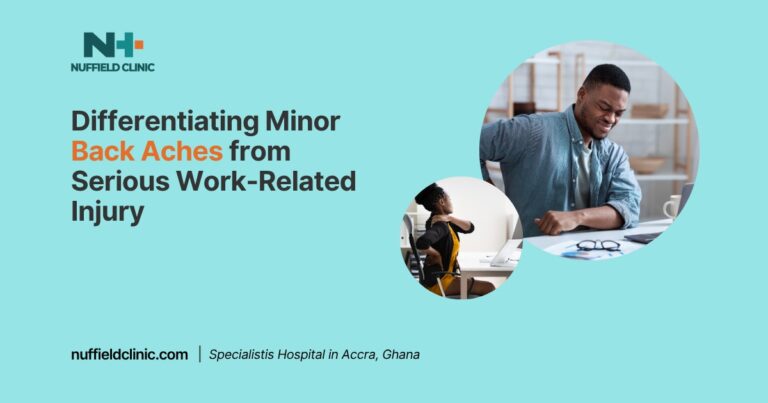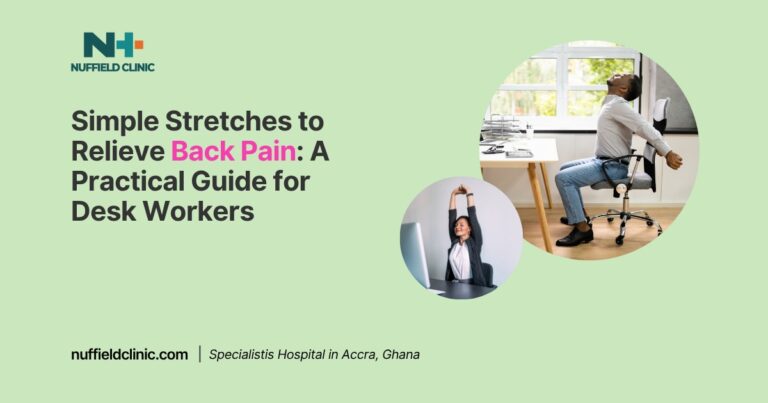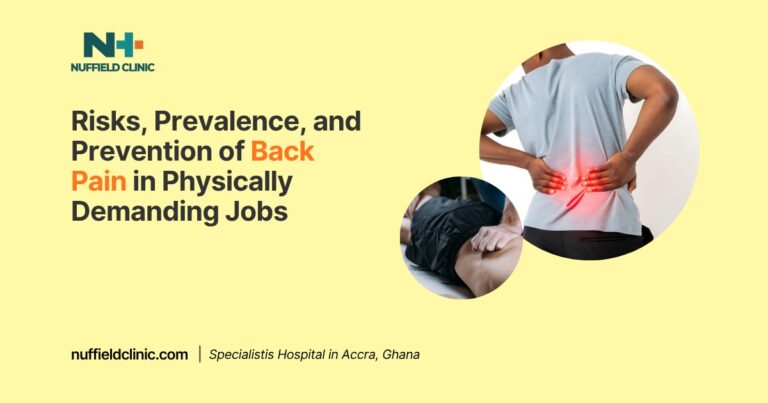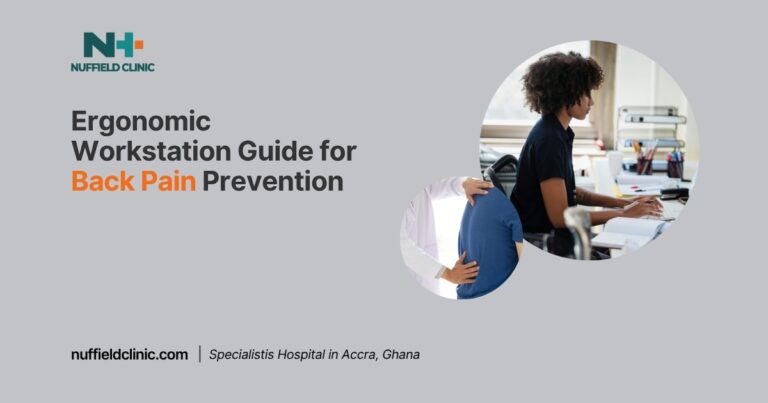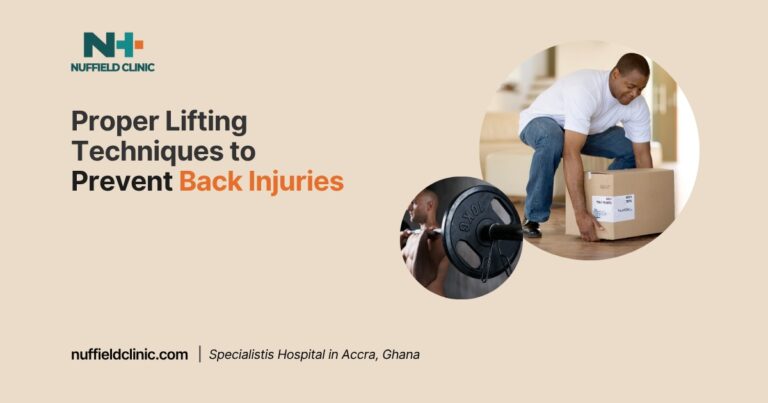Common Reasons for Back Pain and Simple Ways to Get Relief
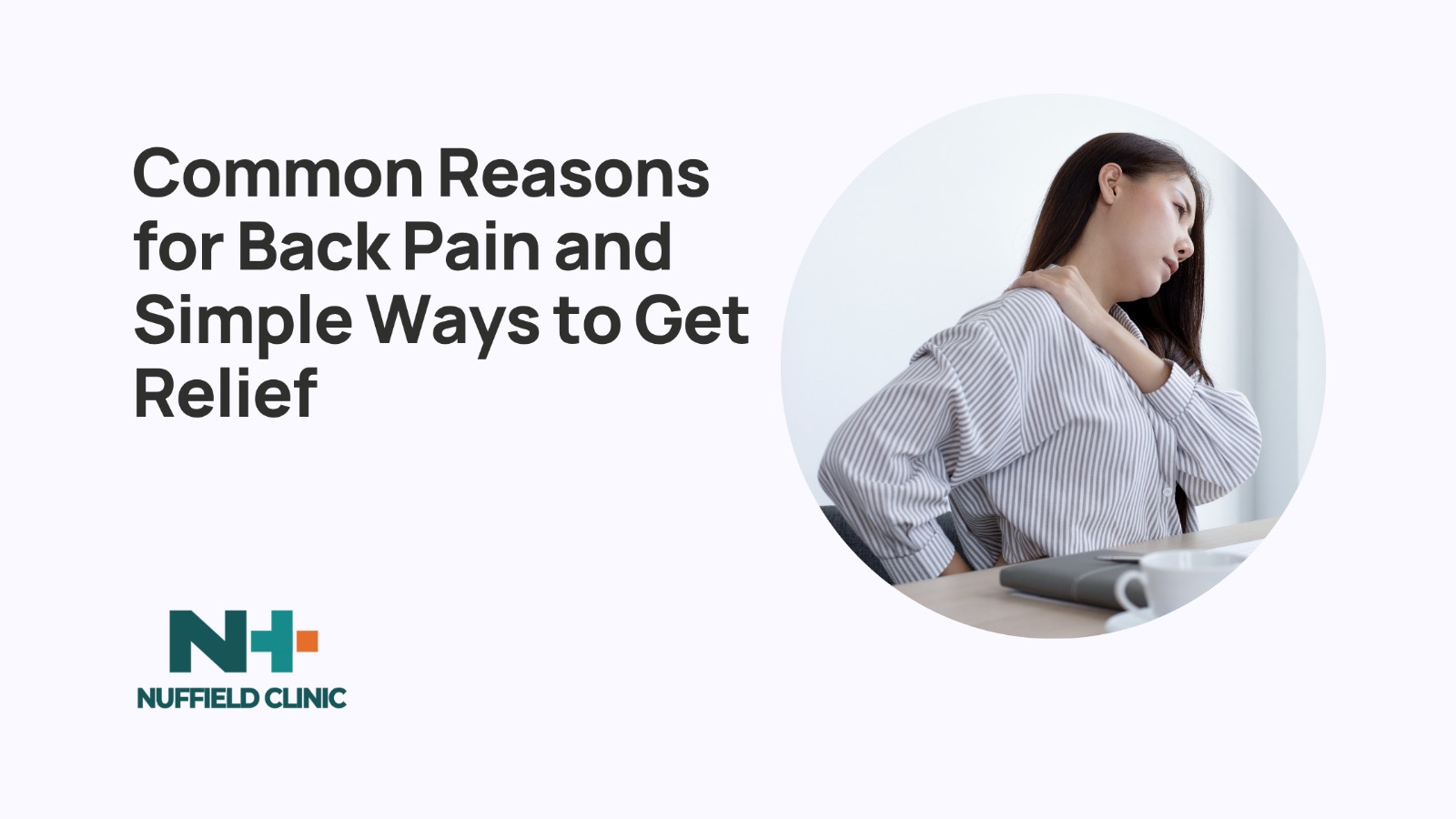
What causes back pain, and how do you get relief? Back pain isn’t just a problem for athletes, construction workers, or the elderly. If you’ve ever winced getting out of bed, found it hard to sit through a movie, or hesitated to lift your child or groceries, this article is for you.
At Nuffield Clinic, we know how back pain can interfere with your everyday life. Whether it’s a dull ache that sneaks in during long workdays or a sharp, shooting pain that stops you in your tracks, back discomfort can feel overwhelming. But the good news? There are simple ways to manage it, and in many cases, prevent it.
This article explores what causes back pain and, most importantly, what you can do to find relief. You don’t need a medical degree to understand the concepts, just a willingness to listen to your body and make a few helpful changes. By the time you’re done reading, you’ll understand the most common triggers of back pain, recognise warning signs, and learn powerful yet easy strategies to start feeling better.
Let’s dive in.
Back pain is common
According to Medical News Today, research shows that lower back pain is the leading cause of disability worldwide. It’s also one of the main reasons people visit doctors or miss work, says the Mayo Clinic. That means millions of people are dealing with the same thing you are right now.
But not all back pain is the same.
Some come on fast, maybe after twisting the wrong way or lifting something heavy, and disappear within a few weeks. That’s what we call acute pain. Johns Hopkins defines it as pain that doesn’t usually last more than six weeks. Then there’s chronic back pain, the type that lingers for months, even years. It might develop slowly, or it could have started suddenly and just never gone away. According to TRIA Orthopaedics, it’s the chronic type that tends to be more stubborn and often needs a longer-term management plan.
What’s really causing back pain?
The truth is, there’s rarely just one single cause. Back pain is more like a recipe; many ingredients can combine to make it worse.
Muscle or ligament strain is one of the biggest culprits. Repeated heavy lifting or sudden awkward movements can stretch or tear tissue, leading to spasms and pain. It’s easy to overdo it, even during something as routine as gardening, housework, or helping a friend move furniture.
Age-related degeneration also plays a role. As we get older, our muscles weaken, and the cushioning disks in our spines can shrink or become damaged. Conditions like arthritis, degenerative disc disease, or spinal stenosis (a narrowing of the spinal canal) are more likely to appear over time.
Disk problems, such as a slipped or herniated disk, can happen when the soft centre of a spinal disk bulges out and presses on a nearby nerve. That’s often when people feel shooting pain or numbness down their leg, a condition known as sciatica.
There’s also the matter of posture. Long hours slouching at your desk or craning your neck toward a screen can quietly strain your back. Over time, poor alignment and repetitive habits wear you down.
Trauma from car accidents, slips, or falls may trigger pain, especially if they exacerbate existing spine issues. And sometimes, it’s not about what you did, but rather what your body’s going through. Lifestyle factors like obesity, smoking, lack of exercise, and stress can significantly raise your risk. Even underlying medical conditions, such as scoliosis, kidney stones, infections, or certain types of arthritis, can be involved.
What does back pain feel like?
There’s no one-size-fits-all description. Some people experience a dull ache. Others report sharp, stabbing, or burning pain. You might feel it only when standing or sitting. Or it could radiate down your legs, with tingling, stiffness, or even numbness.
Now, while most back pain gets better with time and care, there are warning signs you shouldn’t ignore. If you develop unexplained weight loss, fever, bowel or bladder issues, or you’ve had a major fall or injury, see a healthcare provider immediately. These can be signs of a more serious condition.
Most back pain can be managed without surgery
Yes, you read that right. You don’t need to jump straight to invasive procedures. TRIA Orthopaedics emphasises that surgery is generally a last resort, recommended only after all non-surgical treatments have failed. Mayo Clinic agrees, saying simple home care and proper body mechanics can heal the back in just a few weeks.
So, what can you start doing today?
First, get moving. Resting too long can make pain worse. Light activities like walking, yoga, swimming, or stretching help restore strength and mobility. TRIA Orthopaedics puts it plainly: “The best treatment for chronic back pain is movement.” Johns Hopkins adds that gentle aerobic exercise and specific core strengthening exercises are key to lasting relief.
You can also try heat and cold therapy. Cold packs reduce inflammation immediately after injury, while heat improves circulation and soothes sore muscles. A warm bath or heating pad may do wonders at the end of a long day.
Stretching helps, too. Moves like the Cat-Cow Pose, Cobra stretch, or simply touching your toes can release tension and increase flexibility. Be consistent, but gentle.
Don’t underestimate posture. Adjust your workspace so your screen is at eye level and your chair supports your lower back. Break up long periods of sitting with short walks or stretching.
Topical pain-relief creams, especially those with menthol or CBD, can provide temporary relief. And if your doctor recommends it, over-the-counter medications like ibuprofen or acetaminophen can ease discomfort.
Massage therapy? It might not cure chronic pain, but many people find it offers short-term relief and relaxation. Especially when combined with other strategies.
One area often overlooked? Sleep. Poor sleep quality is closely linked to back pain. Try to get 7–8 hours of sleep nightly. Experiment with different sleeping positions; some people find lying on their side with a pillow between their knees helps.
And yes, what you eat matters. Anti-inflammatory foods such as leafy greens, fruits, whole grains, and omega-3s can support healing. Avoid excess sugar, red meat, and processed snacks that can fuel inflammation.
Also, stress has a physical toll. Tension in your muscles, shallow breathing, poor posture, it all adds up. Techniques like deep breathing, progressive muscle relaxation, and mindfulness meditation can lower your stress and your pain.
Finally, for those with long-term discomfort, physical therapy is one of the most effective solutions. A good physical therapist will design a movement-based plan tailored to your condition, focusing on strength, flexibility, posture, and daily mechanics. It’s not just about treating pain, but empowering you to move better and live stronger.
Prevention is powerful
Once your pain subsides, it’s tempting to go back to old habits. Don’t. Prevention is your best ally. Stay active, strengthen your core, maintain a healthy weight, quit smoking, and manage stress. Lift with your legs, not your back. Be mindful of how you sit, stand, and sleep.
Back pain relief at Nuffield Clinic
Back pain may be common, but it doesn’t have to control your life. With the right knowledge and consistent self-care, most people can find relief and stay pain-free for the long haul.
We hope this guide gives you the clarity and confidence to take that next step toward healing. And remember, if your pain persists or worsens, don’t wait. Book a consultation with your physical therapist or healthcare provider to get a full evaluation and personalised plan.


